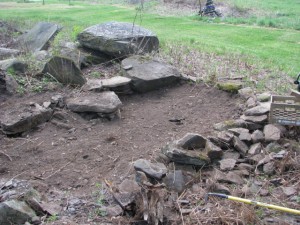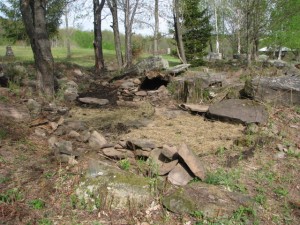Three Fundamental Design Concepts
The foundational concepts in reading the landscape are Access, Water, Slope/aspect. These provide a starting point and touchstone from which an imaginative and useful design can unfold.
Rather than put a cabin on a ridge top because of “the view”, consider the expense of putting in a driveway all the way up there, having to pay for electricity to pump water and supplies up and the exposure to wind and extreme weather elements. Rather put the cabin half or more down the hill on a protected, sun-facing south east or south west facing slope, capture water high on the landscape and let gravity bring it to you, and pay a lot less for driveway access road construction.
Lean how Nature expresses herself. How does she do that where you live? How can you mimic her rhythms and flows and direct some of its abundance towards the benefit of those who live with the land and the animals, plants,… you share with?
Replace Monoculture with Diversity and Expand the Edge
 In a monoculture system, if a disaster befalls and wipes out 70% of your crop, you might as well close up shop. In a diverse mixed perennials/annuals Permaculture growing system, it can look messy yes, but even with a 70% failure of the system, you will still get a harvest. Companion planting, use of Permaculture Guilds (like the classic Native American Corn, Beans, Squash) and always fostering diversity of “the Edge effect”, adding multiple, interconnected elements and subsystems in a complexity of interconnections.
In a monoculture system, if a disaster befalls and wipes out 70% of your crop, you might as well close up shop. In a diverse mixed perennials/annuals Permaculture growing system, it can look messy yes, but even with a 70% failure of the system, you will still get a harvest. Companion planting, use of Permaculture Guilds (like the classic Native American Corn, Beans, Squash) and always fostering diversity of “the Edge effect”, adding multiple, interconnected elements and subsystems in a complexity of interconnections.
Like a fractal, the constantly branching possibilities available to Flow through the system create growth and succession through time. Protracted observation and recognizing patterns over time can help you notice one of the core Permaculture principles – Stacking Functions: every element in a system serves multiple functions and every function is provided by multiple systems.
Permaculture is…
 Imagine a scientific design system that uses as its methodology, learn from and use the best qualities of all different kinds of systems. Find the Michaelangelo in a rough piece of stone. Borrow from all available Wisdom – from local customs, myths and traditions to County records, resource and extension offices, to Google Earth and contour-lined topo maps and crayons. Find your own niche and apply Permaculture ethics and principles to you decision making process as you develop project ideas and possibilities. Doing so will generate abundant beauty and nutrition at a reasonable cost because you recycle/repurpose local resources and depend less on off-site stuff.
Imagine a scientific design system that uses as its methodology, learn from and use the best qualities of all different kinds of systems. Find the Michaelangelo in a rough piece of stone. Borrow from all available Wisdom – from local customs, myths and traditions to County records, resource and extension offices, to Google Earth and contour-lined topo maps and crayons. Find your own niche and apply Permaculture ethics and principles to you decision making process as you develop project ideas and possibilities. Doing so will generate abundant beauty and nutrition at a reasonable cost because you recycle/repurpose local resources and depend less on off-site stuff.
